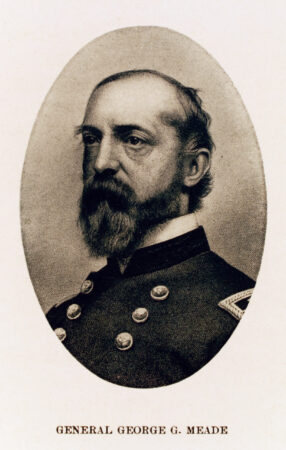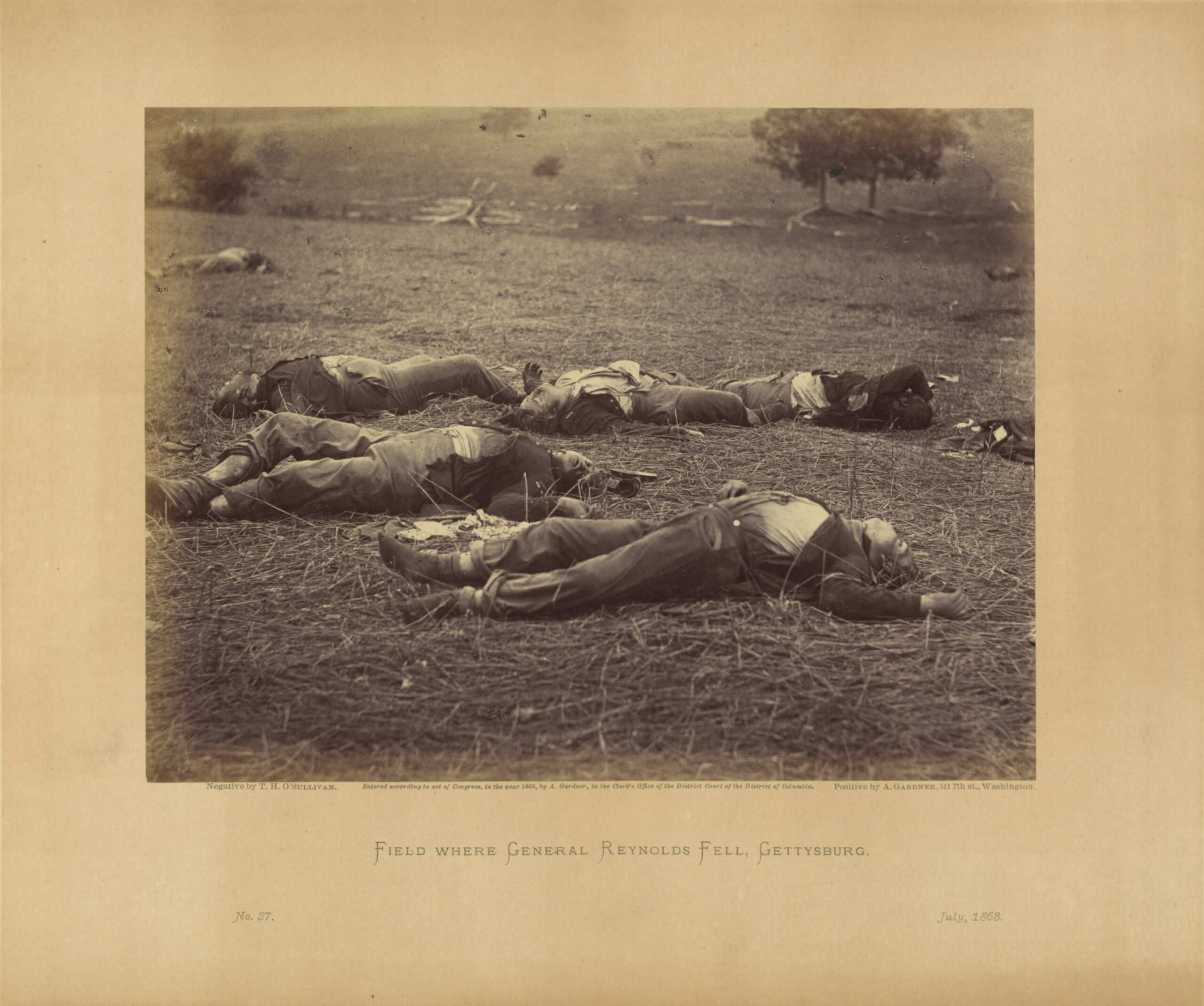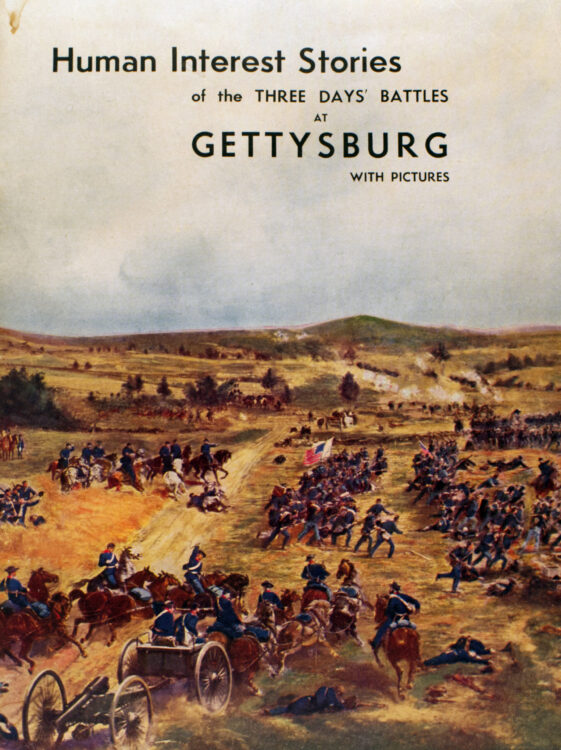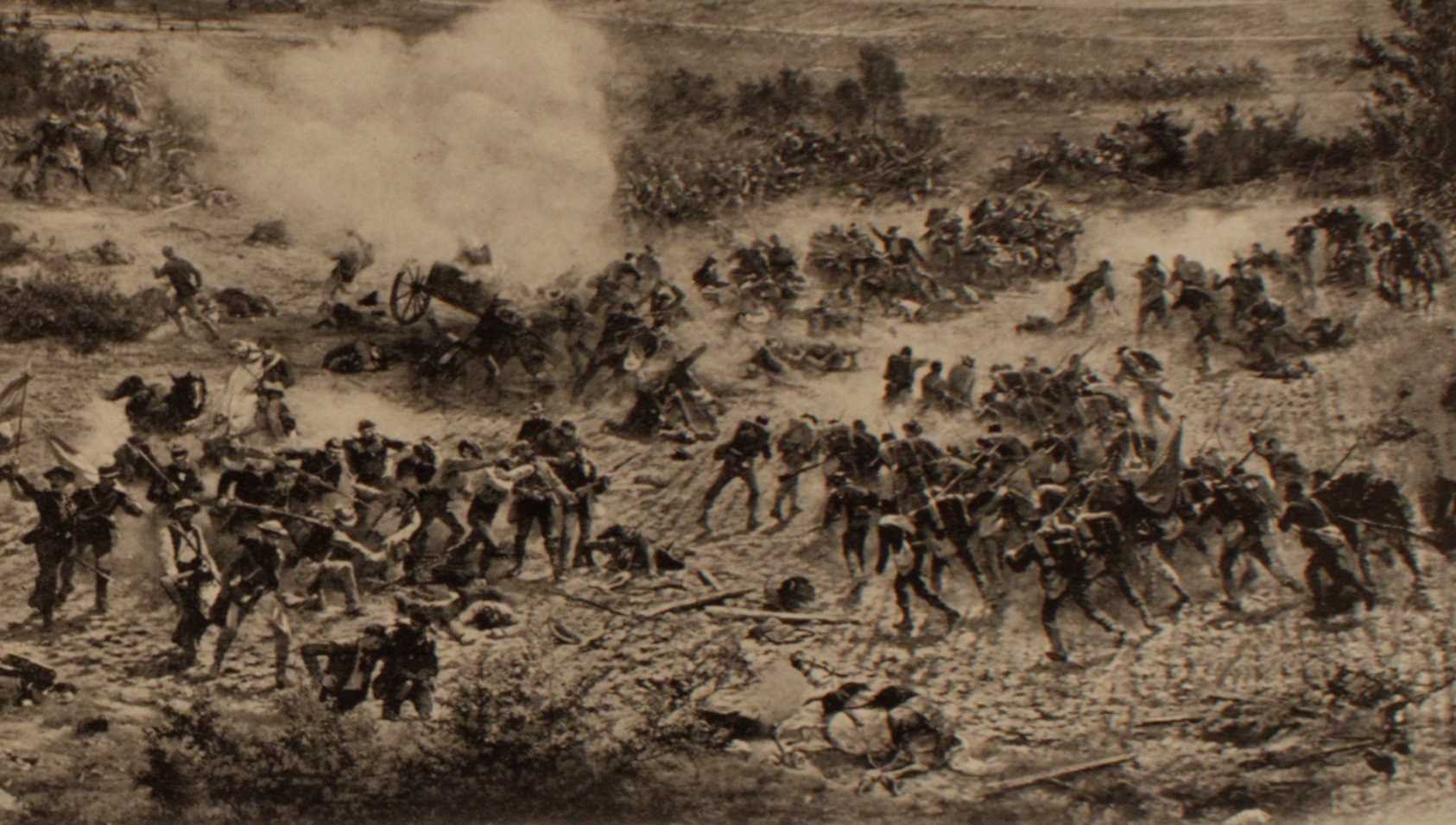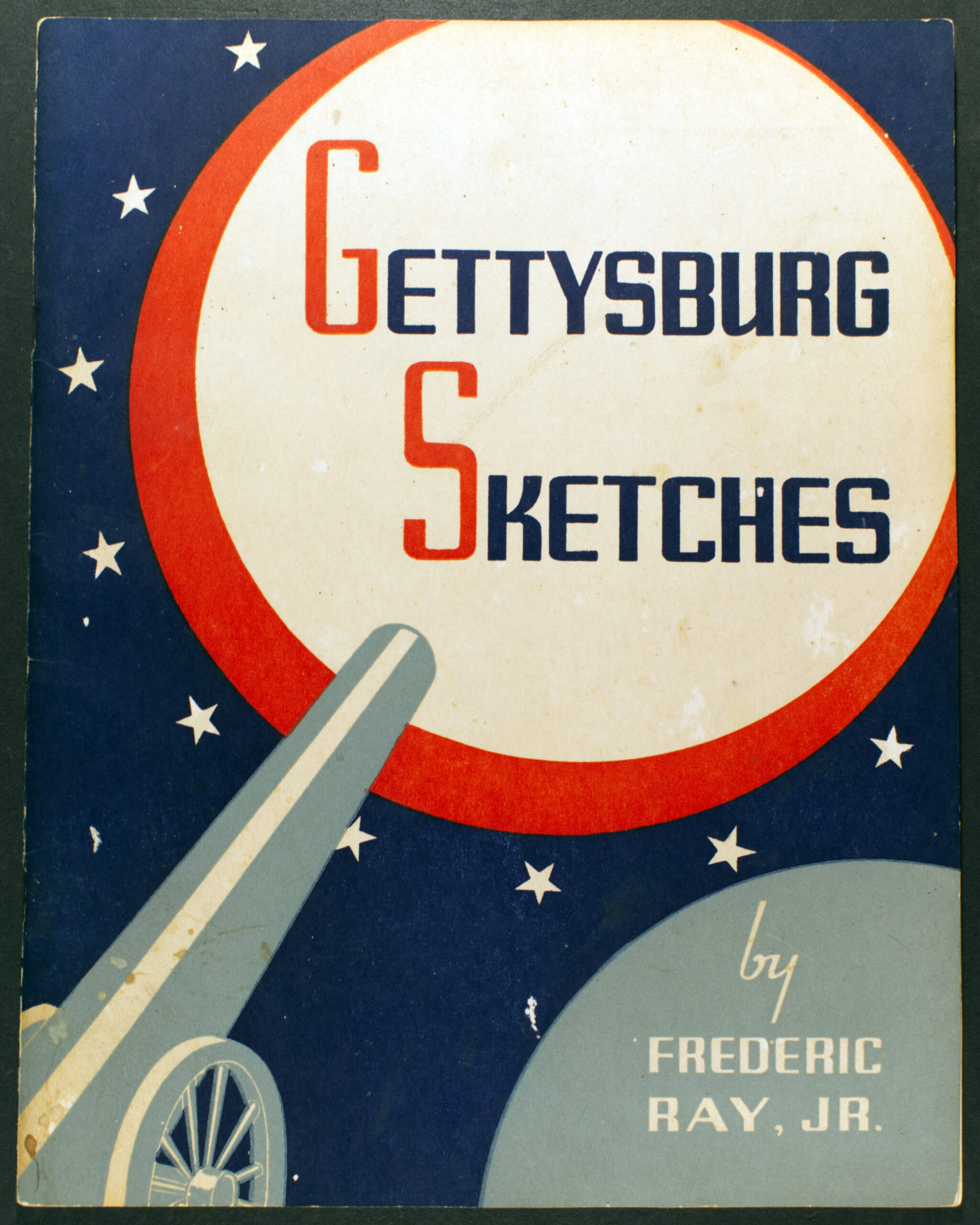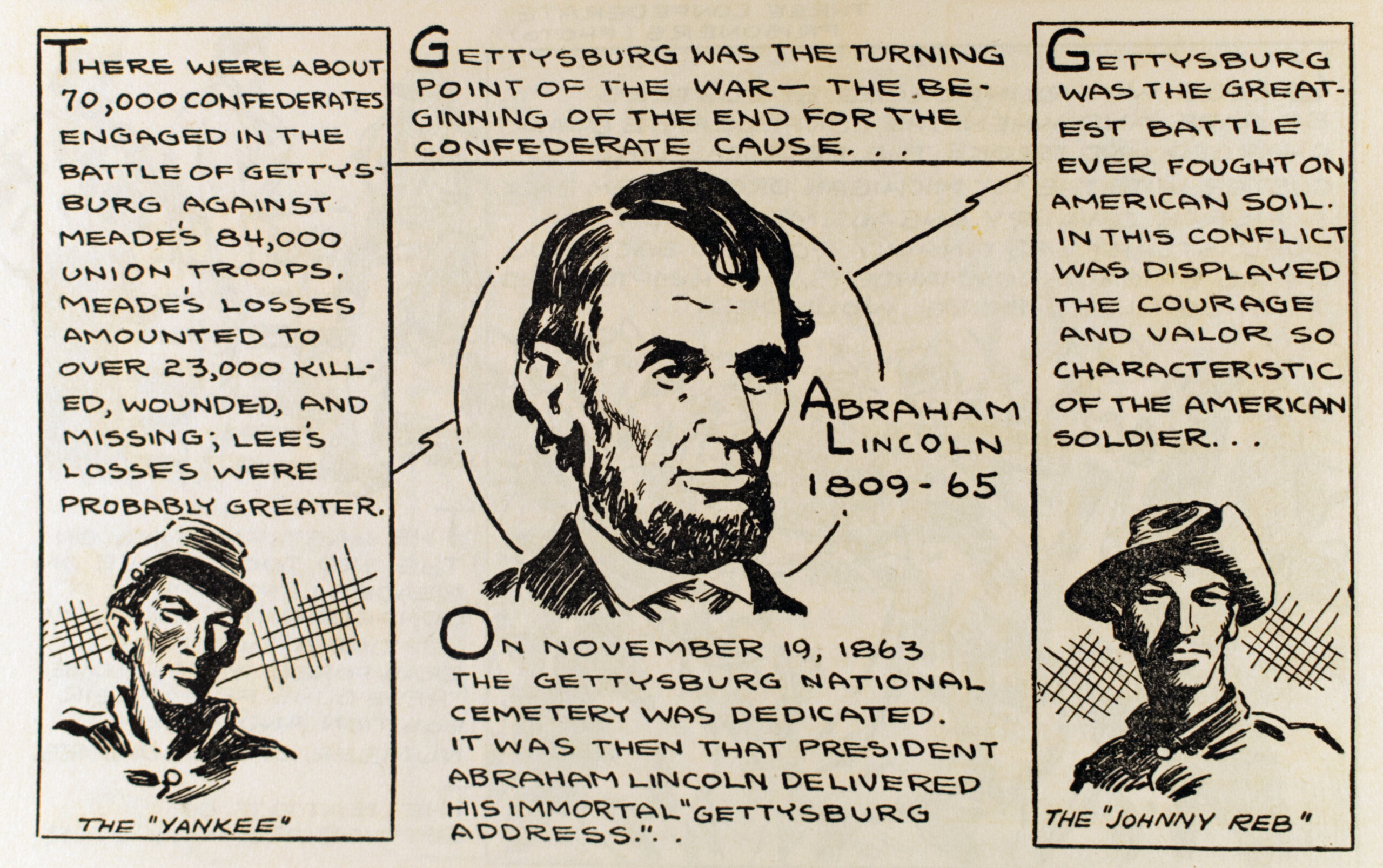The bottom-line statistics of the battle fought between General Robert E. Lee’s Army of Northern Virginia and Major General George Meade’s Army of the Potomac are staggering. Over three days, July 1-3, 1863, a force of 73,000 Confederates met 95,000 Union troops on the fields at Gettysburg, a scenic valley town located at crossroads between two ranges of hills. This was and remains the largest military engagement ever fought on American soil: 168,000 troops with 53,000 casualties.
Seven thousand and fifty-eight were killed there.
[Item 1] Carr, Clark E. (Clark Ezra). Lincoln at Gettysburg: an Address. Chicago: A.C. McClurg & Co., 1906. Printed at the Lakeside Press.
General Lee withdrew in defeat at the end of July 3, leaving military surgeons to treat 7,550 wounded Confederates who remained on the fields. As the Union Army departed, 13,709 wounded Federal soldiers were left behind. The U.S. Sanitary and Christian Commissions arrived to help, but essentially every structure in Gettysburg became a field hospital and all its citizens tended to the wounded, dying, and dead. Heavy rains fell on July 4, exposing corpses that had been quickly buried in shallow graves where they fell, and increasing the decomposition of bodies yet unburied. Burying the dead became a priority.
[Item 2] Alexander Gardner (1821-1882). Gardner's photographic sketch book of the war. Washington, D.C.: Philip & Solomons, 1865. "Field where General Reynolds Fell, Battlefield of Gettysburg” negative by T.H. O'Sullivan; positive by A. Gardner. Albumen print, plate 37, volume 1. July 1863.
Alexander Gardner was one of several photographers supervised by Matthew Brady. He was the official photographer of the Army of the Potomac, documenting much about military operations, armaments, and camp life during the Civil War. The University of Delaware Library holds his two-volume “photographic sketch book,” as well as a Gardner portrait of Lincoln and Gardner’s photographs of the execution of the Lincoln conspirators. The reproduction shown here is courtesy of the digital prints available from the Library of Congress.
[Item 3] Grimm, Herbert L. Human Interest Stories of the Three Days’ Battles at Gettysburg. Gettysburg: Times and News Pub. Co., 1927.
French military artist Paul Philipoteaux (1846-1923) illustrated Pickett’s Charge on July 3 in his famous Gettysburg Cyclorama, a massive 365 x 42 foot work in 27 panels, originally displayed between 1884-1891 in Boston. The painting was installed at Gettysburg in time for the 50th anniversary of the battle in 1913. Scenes from the Cyclorama are reproduced in this booklet.
[Item 4] Gettysburg; the Pictures and the Story. 18th ed. Gettysburg: Tipton & Blocher, 1913.
This souvenir photo-booklet was issued for the 50th anniversary of the battle. Landscape architect William Saunders designed a semi-circular cemetery with sections proportioned to the number of graves for each state. Delaware had a section with 15 graves.
[Item 5] Ray, Frederick. Gettysburg Sketches: a concise and illustrated history of the Battle of Gettysburg: story, maps, pictures. Gettysburg: Times and News Pub., 1939.

